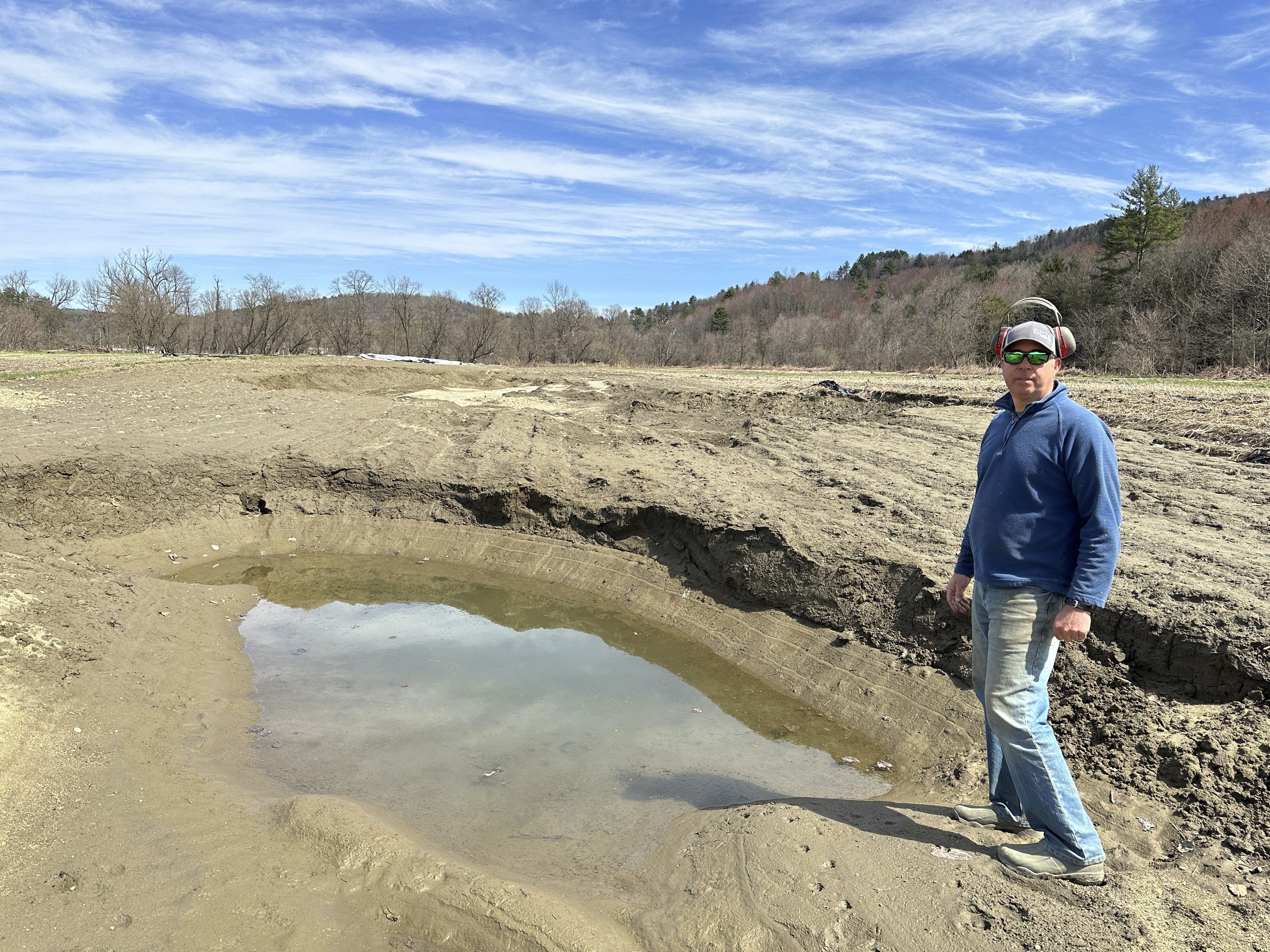Rain and an expected warmup in temperatures forecast for later this week have emergency management officials in Vermont eying rivers and lakes—and any changes to their icy surfaces—to stay alert to potential public safety impacts.
Montpelier has already taken steps aimed at reducing the risk of ice jam flooding.
Twenty-seven years ago Monday, the heart of Vermont’s capital city was swallowed by frigid floodwaters.
“That was devastating to our downtown merchants,” Chief Bob Gowans of the Montpelier Fire Department recalled. “Devastating. We definitely don’t want to see a repeat of that.”
The Winooski River had become jammed with big blocks of ice, leaving the river behind that clog with nowhere to go but up and into the streets. The floodwaters left behind widespread property damage.
Fast forward to today, and a gushing discharge of clean, 45-degree water is pouring into the Winooski from a riverbank. It is designed to open up a channel in the ice and keep things flowing normally.
“The hope is by opening that channel, if we were to get an ice jam, it would give a place for the ice to move through,” Gowans explained.
Vermont
The latest news from around the state
Montpelier and other Vermont communities prone to ice jams are now watching their rivers.
As spring approaches, splintering river ice can mean jams, with rapid snow melts and heavy rain only worsening the threat from rising river levels.
Gowans said the city is now hoping for a slow, gradual thaw with no heavy rain—to lower the risk of flooding. A rapid and sustained warmup, combined with rain, would greatly increase the risk for flooding, Gowans said.
An excavator with a long arm has just been placed along the Winooski, as well, in case an ice jam does form. Montpelier emergency management officials want the excavator at the ready in case they need to bust up a possible jam, Gowans said.
On Lake Champlain, the expected warmup later this week is also sparking safety reminders.
“There are going to be areas that are extremely thin,” cautioned Scott Whittier of the National Weather Service.
Satellite imagery from Friday had the National Weather Service declaring the lake frozen over—even at its widest point—something that hasn’t happened since 2015, according to NWS data.
NWS Meteorologist Scott Whittier noted some spots in the ice on Lake Champlain are soft. Whittier added that milder temperatures, combined with the angle of the sun in March, could mean deteriorating ice conditions.
“As we get into the next couple of weeks, get your ice fishing done and heed the warnings from public officials to stay off the ice,” Whittier advised.
Monday, the Vermont Department of Fish & Wildlife reminded anglers that state law requires ice fishing shanties to be removed from the ice before it weakens or can’t support shanties.
The deadline to remove shanties and all contents and associated fishing materials from the ice this year is March 31. Failure to do so could mean a $1,000 fine, Fish & Wildlife said.



